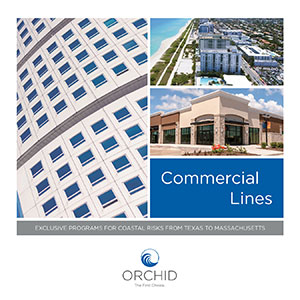Torrential rain and heavy winds downed scores of trees and power lines in a Queens community while raw sewage flooded basements in Brooklyn, where homeowners waded through wastewater to find personal belongings and sentimental keepsakes.
Although the impact of Tropical Storm Fay was considered limited, the insured loss is predicted to be close to $400 million according to catastrophe-modeling consultant Karen Clark and Co. Fay, which brought damaging winds to parts of Maryland, Delaware, New Jersey, Pennsylvania, and New York, in early July, was the sixth named storm of the season, the earliest on record.
More than halfway through 2020, destructive weather continues to wear thin on Americans who have already dealt with 14 separate billion-dollar disasters from wildfires in the west to severe storms that unleashed tornadoes, damaging winds and hail across more than 30 states, from the Great Lakes to the Gulf Coast. The National Oceanic and Atmospheric Administration said Fay marked the sixth-consecutive calendar year in which 10 or more billion-dollar weather events occurred — another new record.
Weather experts point to the changing atmosphere for the reason stronger storms are occurring more frequently. Simply put, warmer air evaporates more water from the oceans, transferring energy and water vapor to the atmosphere. The result is more intense storms that bring heavier rains especially in coastal regions where hurricanes are increasingly making landfall. While a consensus has yet to link storm activity and climate change — an area likely to expand in the coming decade — experts say it has been challenging to draw conclusions based on limited data.
“Most insurers are trying to come to terms that climate change is fueling an upswing in more powerful storms,” said Ross Bowie, who is head of Personal Lines at Orchid, a leading provider of catastrophic-exposed property insurance in the United States, the Caribbean and the Bahamas. “We have to start considering its implications. Because we are in the business of assessing risk related to potential catastrophic storms, we would be foolish not to.”
More Powerful Storms
The United States now averages $35 billion per year in insured catastrophe damage, up from $25 billion per year in the 2000s. Government data reveals twice as many billion-dollar natural disasters struck the United States in the current decade than in the 2000s. More alarming, perhaps, is that associated losses for 2018 were estimated at $91 billion and for 2019 were $45 billion — for a combined total of $136 billion.
As these losses from natural disasters balloon, many insurance companies have retreated from risky areas prone to hurricanes .The implications have property owners in large swaths of Florida, the Gulf Coast, Mid-Atlantic and even the Northeast struggling to find affordable coverage.
For most insurers, the caveat of more frequent and intense storms translates to higher premiums or deductibles for homeowners, many of whom already believe climate change is generating worse storms where they live; yet they remain unprepared to confront the risks.
“For someone who lives in an area along the East Coast or Gulf Coast, the standard homeowner’s insurance policy most likely puts limits on hurricane coverage for damage related to wind,” said Bowie. “For a homeowner in a high-risk area, that’s an important factor to be educated about.”
Bowie said the good news is that advanced analytics that incorporate property data with predictive climate change models have enabled Orchid Insurance to write more sophisticated policies that improve risk selection and pricing on flexible coverage options including Multi-Peril, Wind Only, Ex-Wind, Flood, Excess Flood, Inland Marine/Personal Article Floaters.
“The questions for homeowners that live in high-risk coastal regions is not a matter when a hurricane will come,” said Bowie. “But what are you going to do about it.”
Coverage Advice
Instead of hoping for the best, Bowie said property owners should contact a trusted insurance provider to reevaluate their policies and identify any unique exposures that are at risk to severe storms. Although Fay failed to develop into a hurricane, the tropical storm was a pretty good harbinger of the “above average” weather activity to come. Given that 23 named storms have already formed, the year 2020 is positioned to pass the mark of 27 set in 2005 with a little more than a month to go in the current hurricane season.
“If drastic weather predictions are to hold true, insurers will have to adapt their products and the actual cost of insuring properties to the higher probability of storm damage,” said Bowie. “This type of analysis is something agents and property owners need to stay abreast of.”
Orchid Underwriters Insurance, LLC, is the First Choice for catastrophic-exposed property insurance. If you need flexible products, fast processes, expert underwriting and competitive pricing, superior customer service is a phone call away at 1-866-370-6505 or visit http://orchidinsurance.com/




